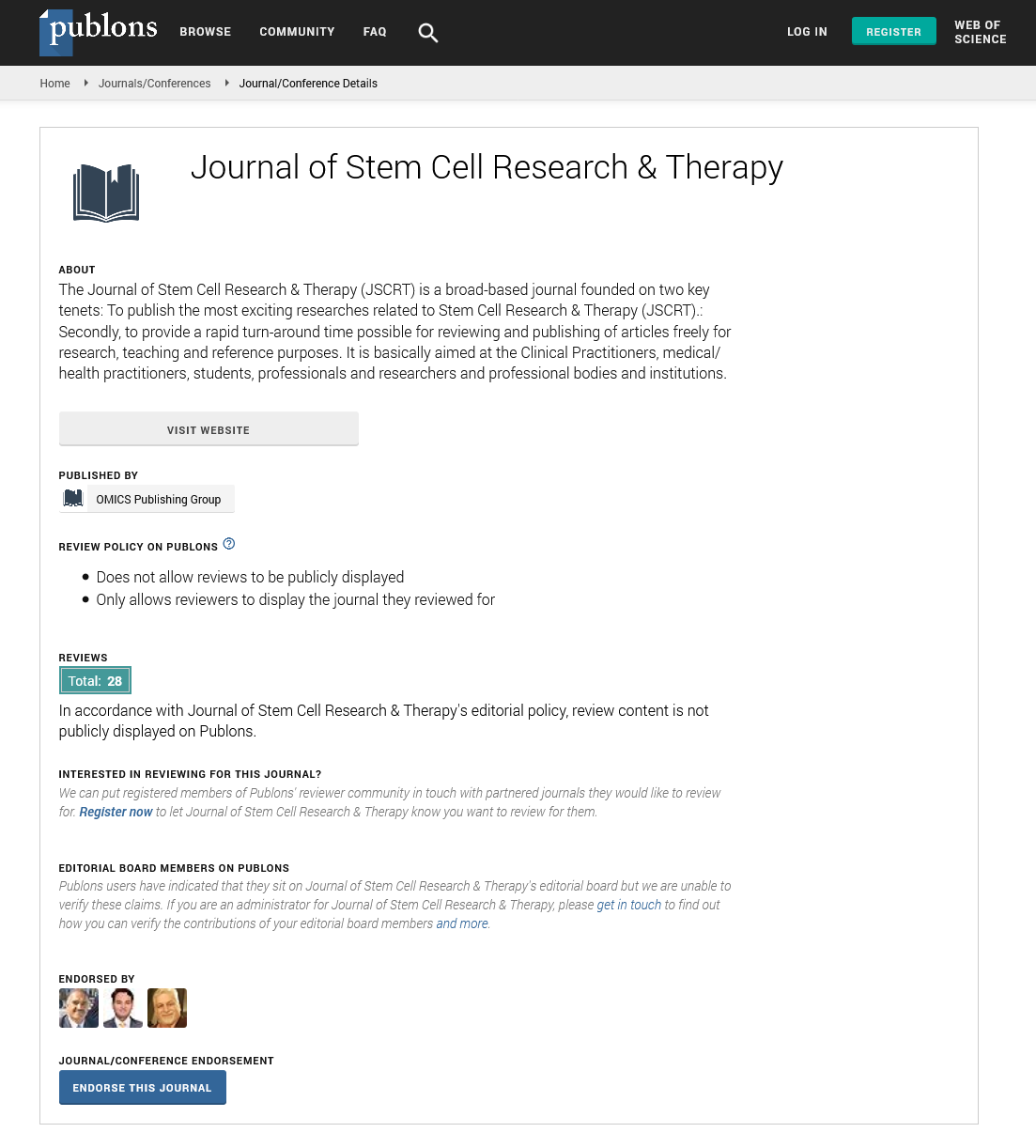Indexed In
- Open J Gate
- Genamics JournalSeek
- Academic Keys
- JournalTOCs
- China National Knowledge Infrastructure (CNKI)
- Ulrich's Periodicals Directory
- RefSeek
- Hamdard University
- EBSCO A-Z
- Directory of Abstract Indexing for Journals
- OCLC- WorldCat
- Publons
- Geneva Foundation for Medical Education and Research
- Euro Pub
- Google Scholar
Useful Links
Share This Page
Journal Flyer

Open Access Journals
- Agri and Aquaculture
- Biochemistry
- Bioinformatics & Systems Biology
- Business & Management
- Chemistry
- Clinical Sciences
- Engineering
- Food & Nutrition
- General Science
- Genetics & Molecular Biology
- Immunology & Microbiology
- Medical Sciences
- Neuroscience & Psychology
- Nursing & Health Care
- Pharmaceutical Sciences
Perspective - (2023) Volume 13, Issue 2
Instead of Stem Cell Differentiation, Mature Pancreatic Beta-Cells are Formed by Self-Duplication
Juliana Melton*Received: 03-Mar-2023, Manuscript No. JSCRT-23-20424; Editor assigned: 06-Mar-2023, Pre QC No. JSCRT-23-20424(PQ); Reviewed: 21-Mar-2023, QC No. JSCRT-23-20424; Revised: 28-Mar-2023, Manuscript No. JSCRT-23-20424(R); Published: 07-Apr-2023, DOI: 10.35248/2157-7633.23.13.585
Description
How cells produce and retain the appropriate cell number is a fundamental issue in biology. In theory, tissue turnover can happen either by the duplication of already differentiated cells or by the development of stem cells, as is widely known for the blood, skin, and gut. Recent work on adult stem cells has spotlighted their potential contribution to body part maintenance and repair. It is unclear, though, how much stem cells contribute to these processes in vivo. Here, we present a technique for genetic lineage tracing that can be used to estimate the donation of stem cells to a target tissue. We concentrate on pancreatic beta-cells, whose postnatal origins are still debatable. In adulthood and following pancreatectomy in mice, our data demonstrates that preexisting beta-cells, not pluripotent bone marrow, are the predominant source of new beta-cells. These findings disprove the notion that adult stem cells play a large role in cell replenishment and imply that terminally differentiated cells still have a significant capacity for proliferating in vivo.
There is a wealth of research on pancreatic beta-cells and the islets of Langerhans that suggests different pathways for tissue homeostasis and regeneration repair. Adult pancreatic endocrine cells fall into a category of tissues that can be maintained by the ego of differentiated cells, according to early research on patterns of (3H) nucleoside incorporation. The genesis of islet cells, particularly insulin-expressing beta cells, may be stem cells, according to more recent immunological histochemical studies. It has been suggested that these adult gastrointestinal stem or myeloid dwell in the bone marrow, inside islets, or in the epithelial of pancreatic ducts. Others have proposed that splenocytes, islet cells that release hormone other than insulin, or pancreatic acinar cells undergo Tran's differentiation in order to develop into cells in adults. It has also been proposed that the formation of new cells within established islets (islet neogenesis) is explained by the clustering of newly formed cells derived from stem cells. In contrast to direct lineage analysis, all of these models and recommendations are mostly dependent just on interpretation of static histology data.
We created a quick technique to tell stem-cell-derived -cells apart from the offspring of pre-existing cells. An anti-androgens Cre/lox system (referred to as "pulse") is used in transgenic mice to heritably label fully differentiated-cells, which are defined here as post-natal cells that express the insulin gene. A histochemical stain can identify the label as the activity of the human serum enzyme protein. The existence of the label in cells is checked after a lengthy interval, during which turnover takes place (the "chase"). New cells originating from any non-labelled source, particularly stem cells, are not labelled; instead, they are only labelled if they are the offspring of pre-existing (labelled) cells. Following a chase period, the number and distribution of labelled cells inside pancreatic islets are predicted differently by several theories of cell dynamics. New islets deduced entirely from stem or forerunner cells that really are; cells not yet typing up the insulin genotype would not contain branded β-cells. In addition, if cells refill β-cells within established islets, the regularity of branded β-cells should slowly reduce. In contrast, the regularity of labelled cells within islet cells should remain constant if new cells are produced through identity.
Citation: Melton J (2023) Instead of Stem Cell Differentiation, Mature Pancreatic Beta-Cells are Formed by Self-Duplication J Stem Cell Res Ther. 13:585.
Copyright: © 2023 Melton J. This is an open-access article distributed under the terms of the Creative Commons Attribution License, which permits unrestricted use, distribution, and reproduction in any medium, provided the original author and source are credited.

